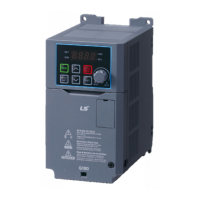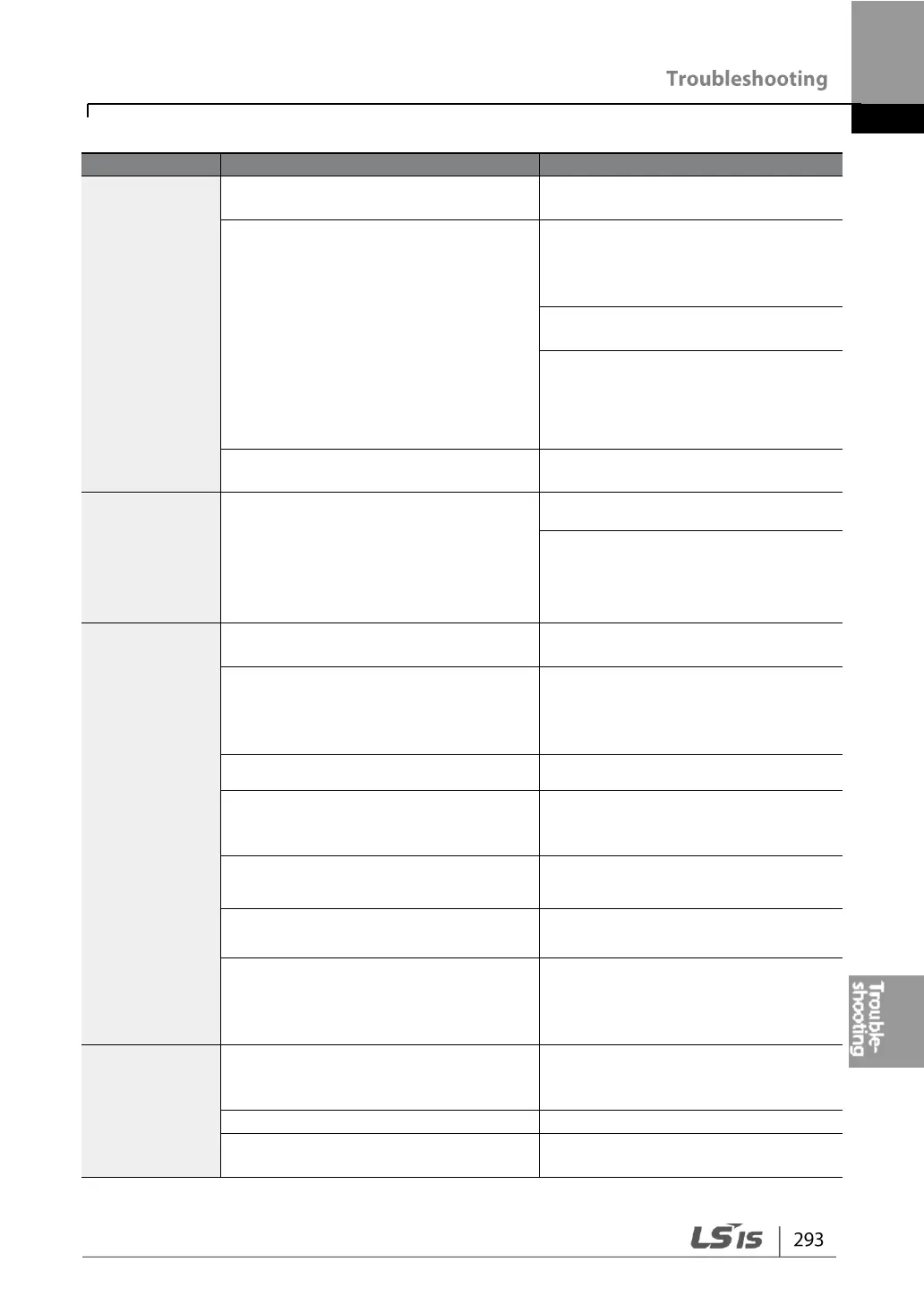The ambient temperature of the
motor is too high.
Lower the ambient temperature of
the motor.
The phase-to-phase voltage of the
motor is insufficient.
Use a motor that can withstand
phase-to-phase voltages surges
greater than the maximum surge
voltage.
Only use motors suitable for
applications with inverters.
Connect the AC reactor to the
inverter output (set the carrier
frequency to 2 kHz).
The motor fan has stopped or the
fan is obstructed with debris.
Check the motor fan and remove
any foreign objects.
The motor
stops during
acceleration or
when
connected to
load.
Replace the motor and the inverter
with models with appropriate
capacity for the load.
The motor
does not
accelerate.
/The
acceleration
time is too
long.
The frequency command value is
low.
Set an appropriate value.
Reduce the load. Increase the
acceleration time.
Check the mechanical brake
status.
The acceleration time is too long.
Change the acceleration time.
The combined values of the motor
properties and the inverter
parameter are incorrect.
Change the motor related
parameters.
The stall prevention level during
acceleration is low.
Change the stall prevention level.
The stall prevention level during
operation is low.
Change the stall prevention level.
Starting torque is insufficient.
Change to vector control operation
mode. If the fault remains, replace
the inverter with a model with
increased capacity.
Motor speed
varies during
operation.
There is a high variance in load.
Replace the motor and inverter
with models that have increased
capacity.
The input voltage varies.
Reduce input voltage variation.
Motor speed variations occur at a
specific frequency.
Adjust the output frequency to
avoid a resonance area.

